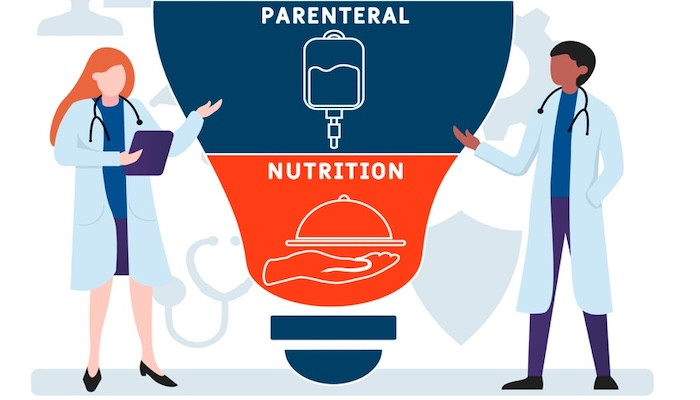Intradialytic Parenteral Nutrition (IDPN)

Intradialytic Parenteral Nutrition (IDPN) can help dialysis patients maintain weight and albumin levels when eating enough protein is a struggle. In this blog, care partner Amber Razo shares her husband’s experience with IDPN, including training, supplies, and a step-by-step technique to avoid frustrating alarms on the NxStage machine.
Why We Chose IDPN

My husband has always struggled to get enough protein, and his albumin usually stayed around 3.8. When he started to really have issues with eating and it dropped to 3.2 consistently, his dietician suggested IDPN to his nephrologist.
IDPN is for those on hemodialysis whose albumin is under 3.4. It is basically a solution of dextrose and ProSol™ (protein) that is administered via an IV pump that attaches to the med line on 172 cartridges. (There is also a version called IPN for PD patients.)
Lipids can also be added to the solution for extra calories, but they cause diarrhea in some people like my husband, so his does not have lipids.
He’s now been on dialysis for over 16 years and, like many patients, still has struggles with appetite — but having IDPN has been a big help in at least maintaining weight and albumin!
Training and Supplies
Training was super easy and took under an hour.
The company sent us the IV pump.
He gets a week’s worth of solution sent directly to our house every week.
Every year, the company automatically sends a replacement pump so I don’t have to worry about servicing.
As a full-time caregiver, one less thing to worry about is huge!
The NxStage Machine Challenge
There is one challenge though: the NxStage machine can be a little finicky.
That’s not necessarily a bad thing—the machine helps patients live, and patients should be safe on it. But in the beginning of using IDPN, I’d frequently get a “10 alarm” indicating air when connecting the IDPN line to the med line on the cartridge, even though I wasn’t seeing any air.
Having to go through all the steps a few times before the alarm clears can be frustrating, even for long-time patients and/or their partners. Eventually, I developed my own technique for setting up and connecting IDPN, and now I rarely get alarms. If you find yourself repeatedly getting the alarm, here’s my technique.
My Technique for Setting Up IDPN
I do all this in the bathroom before moving the IV pole next to the machine. You’ll need the hard sink—you’ll see why:
Move the clamp on the IDPN line down closer to the filter.
Spike the IDPN bag and carefully remove the cap on the end (avoid touching open ends). Once fluid comes out, close the clamp and replace the cap.
Tap the filter upside down against the side of the sink—the hard surface works best for loosening air.
Hold the line at the clamp, take the cap off, and open the clamp. As fluid runs out, swing the line so the filter hits the side of the sink. When bubbles stop moving, close the clamp and recap.
Note: You will not get all the microbubbles out. They are not harmful, so don’t worry. Just aim to remove the larger, moving bubbles.


Final Setup

Move the IV pole next to the dialysis machine.
Thread the line through the IV pump and close the door.
Drape the end of the line over the NxStage cartridge filter (IDPN filter on one side, clamp on the other). This stabilizes the line and prevents bubbles from loosening.
Connect the IDPN line to the med line.
Input numbers on the IDPN pump, and you’re good to go!
(Optional) Drape the line a second time or tape it for security.
Closing Thoughts
I hope this helps! Good luck, warriors!


Comments